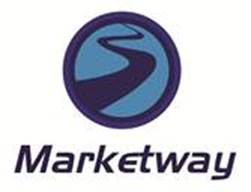(This article was originally written by Jesse Kaufman for Multichannel Merchant).
When it comes to fulfillment, every ecommerce merchant can relate to the lion tamer’s challenge.
Just as he or she must teach huge, hot-tempered animals to respond to commands without becoming their lunch, so must the ecommerce merchant get customers’ goods delivered on time and intact — all while preventing costs from skyrocketing. Needless to say, ecommerce sellers have a fine line to walk to reach top-notch fulfillment.
Jumping Through Endless Fulfillment Hoops
With all the competing factors at play, fulfillment is a tricky environment that requires skill, lightning-fast pivots and a cool head. From balancing postage and packaging costs without hiking up the customers’ price to aggregating tons of orders across different sales channels into one concise fulfillment platform, these endless obstacles can be tough to navigate.
And don’t forget the returns process, which can take an immediate bite out of your bottom line, then come back to further haunt you in the form of extra administrative costs. If your inventory isn’t sorted and catalogued correctly when those returns come back to the warehouse, you’re revisited with the pain of the bite a second time.
On top of these basic ecommerce quandaries sits heightened customer demands and expectations. Consumers want shorter processing windows; as time competes with money, this reality becomes another profit muncher.
“Ouch! The Corporate Sting of Fulfillment Challenges
By now, you know fulfillment challenges aren’t just a pain — they can truly compromise your business.
Each time you make a fulfillment misstep, your bottom line takes a hit. You spend time that should be occupied building other parts of your business, like marketing, branding and product development. And those negative customer experiences due to order delays, mis-ships, or poor communication? You can only hope they don’t go viral in reviews.
So what’s an ecommerce merchant to do? The answer can be summed up in one word: simplify. Here’s how:
Partner with the Best
Building relationships with fulfillment partners that have strong technology backgrounds should be a priority. For the best results, find one experienced with brands and products that are similar to those you sell.
A solid fulfillment partner should know what it’s doing, while providing technical know-how and transparent pricing. Be sure to ask about “hidden” fees such as account maintenance or tech costs. And make sure any large postage discounts the fulfillment partner gets are passed on in full to customers.
Have the Right Tools in Place
It’s always about the tools. If you’re not at a stage when outsourcing fulfillment makes sense, you need those tools even more. Search for platforms that will help you track your inventory, ship products at discounted rates and provide full visibility of data across all sales channels. Try to automate as much of the day-to-day work as possible, allowing you to manage fulfillment on a high level without unnecessary distractions.
It’s simple: Just Communicate
If you don’t want angry customers blowing up your social media, keep them from getting angry in the first place by making sure they know the status of their orders. For merchants selling to the U.K., for instance, U.K. law requires ecommerce retailers to keep customers in the know with written order verification. And even where that’s not the law, it’s just good business.
Customers appreciate having up-to-date order info so give them the ability to see where their orders are through online tracking systems, including any updates on changes or delays. Even if orders are later than expected, they’ll never have to guess when their package is coming or call support to find out.
Ecommerce fulfillment is absolutely a creature requiring careful handling. But like the lion tamer, ecommerce merchants can control fulfillment. Streamlining processes in house or with a trusted partner lets you focus on bigger goals without upsetting your customers or putting your business at risk.
